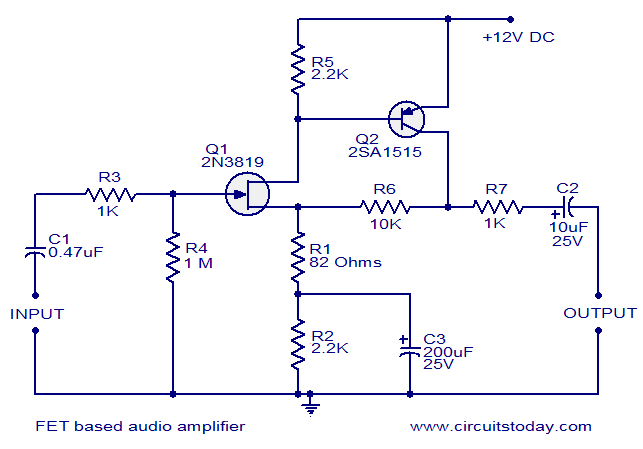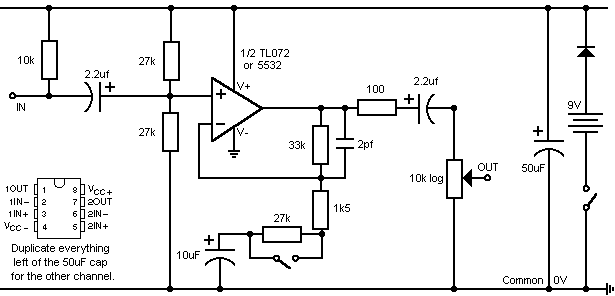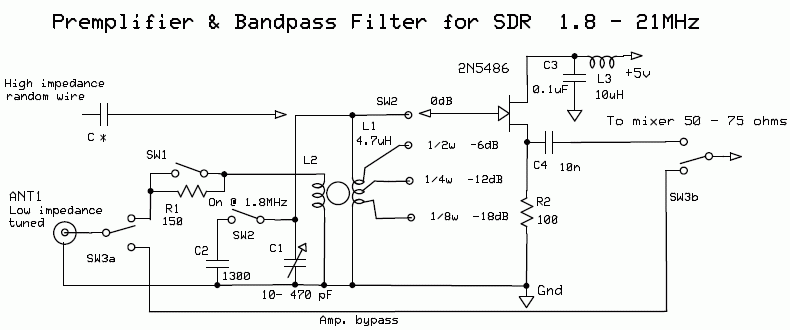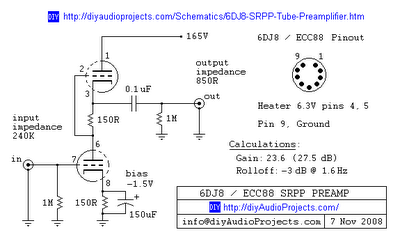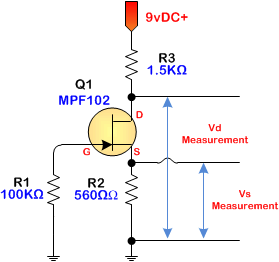
symmetrical class a preamplifier
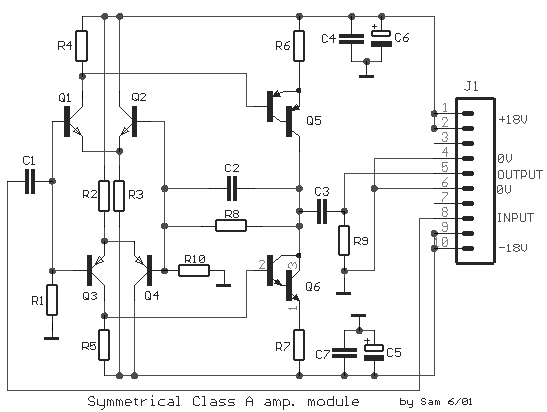
A simple yet effective amplifier unit characterized by low distortion. A similar modification was employed in the HAFLER preamplifier. The quality of the reproduced sound in all symmetrical amplifiers remains consistent, regardless of the cost of materials, including transistors, capacitors, and resistors.
The described amplifier unit is designed to provide high fidelity audio reproduction with minimal distortion. It utilizes a symmetrical amplifier topology, which is known for its ability to deliver balanced output and improved linearity. This design choice ensures that the amplifier can handle a wide range of audio frequencies while maintaining sound integrity.
The amplifier circuit typically consists of a differential input stage, often implemented using matched transistor pairs to enhance performance. This stage is crucial for rejecting common-mode signals, thereby reducing noise and improving the overall signal-to-noise ratio. Following the input stage, voltage gain is achieved through additional transistor stages, which can be configured in a push-pull arrangement to enhance efficiency and reduce crossover distortion.
Capacitors play a vital role in the circuit, serving various functions such as coupling, bypassing, and filtering. High-quality capacitors are recommended to ensure minimal signal degradation. Resistors are strategically placed to set biasing levels, control gain, and stabilize the amplifier's operation across different load conditions.
The output stage of the amplifier may include complementary push-pull transistors that work to drive the load effectively while minimizing thermal distortion. Adequate heat sinking and thermal management are essential to maintain performance and reliability during prolonged operation.
Overall, the amplifier's design principles focus on achieving high sound quality through careful selection of components and a robust circuit layout, ensuring that the performance is not compromised regardless of the cost of individual components. This results in a product that delivers excellent audio fidelity suitable for various applications, from home audio systems to professional sound reinforcement.A very simple but very good amplifier unit, with low distortion. A similar modification was used as a preamplifier HAFLER. The quality however of the reproduced sound in all the symmetrical amplifiers regardless of the cost of the necessary materials, transistors, capacitor and resistors.. 🔗 External reference
The described amplifier unit is designed to provide high fidelity audio reproduction with minimal distortion. It utilizes a symmetrical amplifier topology, which is known for its ability to deliver balanced output and improved linearity. This design choice ensures that the amplifier can handle a wide range of audio frequencies while maintaining sound integrity.
The amplifier circuit typically consists of a differential input stage, often implemented using matched transistor pairs to enhance performance. This stage is crucial for rejecting common-mode signals, thereby reducing noise and improving the overall signal-to-noise ratio. Following the input stage, voltage gain is achieved through additional transistor stages, which can be configured in a push-pull arrangement to enhance efficiency and reduce crossover distortion.
Capacitors play a vital role in the circuit, serving various functions such as coupling, bypassing, and filtering. High-quality capacitors are recommended to ensure minimal signal degradation. Resistors are strategically placed to set biasing levels, control gain, and stabilize the amplifier's operation across different load conditions.
The output stage of the amplifier may include complementary push-pull transistors that work to drive the load effectively while minimizing thermal distortion. Adequate heat sinking and thermal management are essential to maintain performance and reliability during prolonged operation.
Overall, the amplifier's design principles focus on achieving high sound quality through careful selection of components and a robust circuit layout, ensuring that the performance is not compromised regardless of the cost of individual components. This results in a product that delivers excellent audio fidelity suitable for various applications, from home audio systems to professional sound reinforcement.A very simple but very good amplifier unit, with low distortion. A similar modification was used as a preamplifier HAFLER. The quality however of the reproduced sound in all the symmetrical amplifiers regardless of the cost of the necessary materials, transistors, capacitor and resistors.. 🔗 External reference
